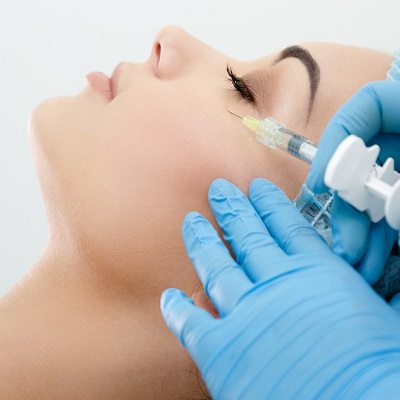
Dermal fillers, especially under-eye fillers, are gel-like injections that add volume and revitalize skin by boosting collagen and elastin production. The main active ingredient distinguishes dermal fillers. Most dermal fillers contain high levels of oral Poly-L-lactic acid and the mineral calcium hydroxylapatite. Fillers for tear troughs employ hyaluronic acid.
This detailed overview covers the risks, benefits, and safety of this procedure to help you decide.
How does the Procedure Work?
These eye fillers work because they precisely fill the needed locations. Hyaluronic acid is injected under the skin to treat dark circles, eye bags, and minor wrinkles quickly.
For a youthful look, it is appropriately injected under the skin to fill hollows and expand the skin. Use under-eye filler to create sunk eyes and shadowy bags. This gives a youthful appearance.
This dermal filler comprises biocompatible and biodegradable hyaluronic acid.
Who Should Get Under Eye Fillers?
A consultation is necessary before a procedure to evaluate whether the patient is suitable. Dermal filler procedures may not work for all facial curves and characteristics. However, dermal eye filler is suitable for persons with tired-looking hollows under the eyes.
- Noticed under-eye skin loss or sagging.
- To get your face in good shape.
- Healthy skin thickness and flexibility.
Which Under-Eye Filler Works Best?
Medical specialists choose under-eye fillers based on the client’s desired results, health, wrinkles, and other skin concerns.
Most providers avoid Poly-L-lactic and limestone hydroxylapatite fillers because they lump and cannot be dissolved. HA fillers are usually used under the eyes.
Dermal fillers with hyaluronic acid (HA) rarely cause allergic reactions or lumps because our bodies naturally produce it. Juvéderm, Restylane, and Versa are popular under-eye HA dermal fillers.
The main advantage of HA dermal fillers is that hyaluronidase dissolves them. This helps when the patient is unhappy with the results.
What are the benefits of this procedure?
One of the biggest benefits of non-surgical therapy is less downtime. You can return to work and finish your day after the treatment, even if the incision sites bruise.
Lower-risk and safer Surgical procedures that entail anesthesia or skin cutting have a far higher risk of problems than non-surgical therapy. However, all surgeries have risks. Our tear trough filler procedure uses a tiny needle for the entry site, which is invisible. There are no serious side effects from minor local swelling.
Our consumers perceive a boost in self-confidence after treatment, which is the most noticeable benefit. Many people who have had discoloration or sunken eyes for a long time are delighted with their new look.
How long do under-eye fillers last?
The longevity of under-eye filling depends on the filler type and the candidate’s lifestyle. Hyaluronic acid (HA) tears through fillers last six to twelve months unless alcohol, nicotine, ultraviolet (UV) radiation, and other skin-damaging factors accelerate their breakdown.
What are The Risks of Under-Eye Fillers?
Every filler injection might cause bruising and edema. In my experience, cannula use after under-eye filler reduces bruising. Lumps, pimples, bluish discoloration (Tyndall), and visible filler material may emerge. However, massage and enzyme injection (hyaluronidase or Hylenex) can remove the filler. HA gel fillers are safer because they can be reversed.
Since hyaluronic acid is naturally found in the skin, HA gel fillers reduce the risk of reactions to allergies, inflammation, and infections. Because of this, HA fillers do not require skin testing before injection. However, if sanitary techniques are not used during injections, irritation or infections may ensue.
How to Prepare for Your First Eye Filler Treatment?
There are several ways to prepare for your under-eye filler appointment.
A few days before your appointment, avoid natural or artificial medications that thin the blood, including anti-inflammatory drugs, fish oil, and alcohol. Limiting these reduces under-eye filler bruising. However, you must continue prescribed drugs.
Find and bring amazing under-eye photos. This will help your injector visualize your treatment goals. Low blood sugar patients may feel lightheaded during therapy, so have a normal meal prior.
What is the Cost of Under Eye Fillers in Islamabad?
On average, the cost of under-eye fillers in Islamabad ranges from PKR 45,000 to PKR 75,000. Several factors affect under-eye filler costs, including filler type, expected filler amount, and injector experience. During your session, your trained cosmetic practitioners will examine the area under your eyes, discuss your aesthetic goals, and create a customized treatment plan.
Book a Consultation!
Dynamic Clinic offers safe, effective, non-surgical under-eye filler procedures. These techniques target hollowing, deep circles, and fine wrinkles under the eyes. By focusing on the patient and striving for perfection, we generate natural-looking results that increase confidence and beauty. So, book your consultation today by filling out the form below or giving us a call.










